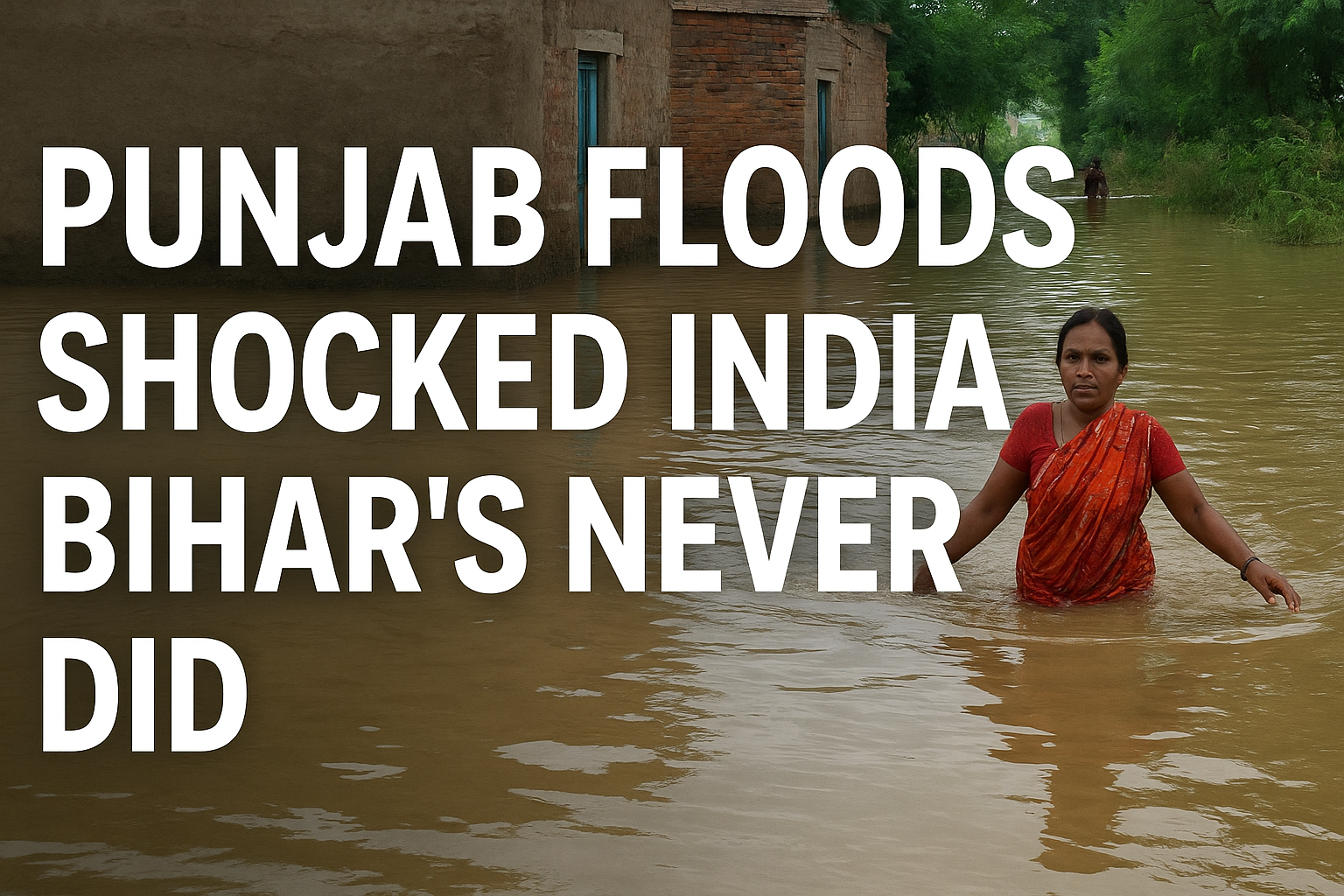
Floods in Punjab this year shocked the nation. Crops were flattened, homes collapsed, and livestock drowned. Television cameras rushed to capture the tragedy. Politicians arrived in gumboots, relief funds were promised, and India watched with horror as its breadbasket went under water. But if Punjab’s disaster was enough to shake the country, why is Bihar’s annual drowning for more than five decades not considered shocking at all?
The truth is that what Punjab is facing today, Bihar has been living with every single year. Over 76 percent of North Bihar’s population lives under constant flood threat. Nearly three-fourths of Bihar’s land area, more than 68,000 square kilometers, is flood-prone. By contrast, Punjab has only a small fraction of such exposure. Yet, a single flood in Punjab is treated as a national calamity, while Bihar’s routine devastation barely makes a headline.
The Kosi River, also called the “Sorrow of Bihar,” has shifted its course by over 120 kilometers in the past two centuries. Its breaches have displaced millions. The worst in recent memory, the 2008 Kosi flood, uprooted 3.3 million people and wiped out entire districts. Still, this was treated as an isolated incident rather than part of a recurring cycle. In fact, in the last 50 years, Bihar has been hit by floods in 33 different years. Yet the nation seems to accept Bihar’s misery as a seasonal event, like monsoon rains or cricket tournaments.
Punjab’s pain deserves sympathy, but the contrast is too glaring to ignore. When Punjab’s buffaloes drown, it becomes national news. When Bihar’s cattle are swept away year after year, the loss is hardly counted. In Punjab, ministers announce relief packages with urgency. In Bihar, flood relief has become a tired ritual: distribute tarpaulin, set up camps, hand out stale rice, and wait for the waters to recede. Then repeat the performance next year.
This is not disaster management. This is disaster routine. Embankments are built and rebuilt across Bihar, stretching over 3,500 kilometers, yet breaches occur so often that villagers see them as natural events. Each breach becomes an opportunity for new contracts, not a lesson for better planning. For decades, Bihar’s people have lived in a cycle of destruction and reconstruction, while policymakers move on to other priorities once the headlines fade.
Why does this difference exist? The uncomfortable answer is political weight. Punjab carries clout in Delhi; Bihar does not. Punjab’s food production is seen as vital for the nation. Bihar’s contribution is overlooked, even though it grows maize, pulses, and vegetables for millions. Punjab’s middle-class voices dominate national media; Bihar’s rural poor do not. The result is a hierarchy of suffering where Punjab’s tragedy is extraordinary, and Bihar’s is ordinary.
But the truth is that Bihar’s floods are not ordinary. They are devastating, they are predictable, and they are preventable. With proper river basin management, desilting, cooperation with Nepal, and scientific planning, much of the damage could be reduced. Yet, while Punjab is likely to receive swift investments to flood-proof its infrastructure, Bihar remains trapped in empty promises and half-measures.
If India cannot address Bihar’s suffering, it sends a dangerous signal. Climate change is making extreme rainfall more common. What Bihar has endured for decades will soon become reality in many other states. Bengal, Assam, and even parts of Delhi will face floods of growing intensity. Ignoring Bihar today means being unprepared tomorrow.
The headline says it all. Punjab floods shocked India, Bihar’s never did. The difference lies not in the scale of water but in the scale of attention. Punjab’s disaster is treated as a national emergency. Bihar’s is treated as Bihar’s identity. Unless this mindset changes, we will remain a nation that mourns selectively and governs selectively.
Punjab will recover from its flood. Bihar, meanwhile, will continue to wait for a flood policy that sees its people as worthy of more than stale rice and plastic sheets. When that day comes, perhaps Bihar’s suffering will finally shock India too.





















